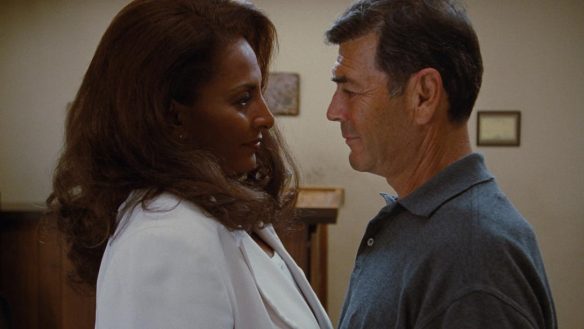Hello folks, and welcome the heck back to Wrong Every Time. Today I am floating on air, as the second session of our third formal DnD campaign ended up sprawling into a seven-hour extravaganza of dynamic roleplaying and haunted house exploration. After two campaigns where the drama was almost entirely provoked by external narrative elements, my group has finally reached the point of in-character confidence for us to spend an hour or so figuring out if our rogue is constantly lying to us, and another hour building up my poor goblin Tilly’s confidence enough to serve as an effective cleric. As you all know, I believe engaging character writing is the heart of emotionally resonant storytelling, and so at last achieving the improv confidence necessary to truly have the party members lead the action has been a thrilling revelation. We’re bickering, revealing our histories, setting up long-term character growth arcs – it’s all that crunchy stuff that I love so much in fiction, here executed on the fly as we beat on ghosts and vampires. Anyway, that was the highlight of my week, but we also ran through some films as well! Let’s run ‘em down!
First up this week was Jackie Brown, Quentin Tarantino’s followup to Pulp Fiction, and the only film of his I hadn’t already seen. The film stars Pam Grier as the titular Jackie, who is caught smuggling money out of Mexico for a gun runner (Samuel L. Jackson). With the feds demanding she work for them and Jackson intent on silencing her for good, Jackie must navigate a no-win situation, with only lovestruck bail bondsman Max Cherry (Robert Forster) on her side.
Jackie Brown is one of Tarantino’s most straightforward films, with little manipulation of chronology or perspective, and a consistent tone of blaxploitation-tinged thriller energy. His presence is nonetheless inescapable, emanating from the film’s reverent gestures towards blaxploitation classics, anecdote-rich pacing, and acidic script. Robert De Niro stars in a role that could likely be excised from the script with no material changes; like Brad Pitt in True Romance, he seems to exist here purely to put Tarantino scumbag dialogue in the mouth of a film titan. Jackson proves yet again his total compatibility with Tarantino’s wavelength, while Grier lords over all, offering such a commanding presence that you really believe this fatigued stewardess could bend all the forces of the government and the underworld to her will.
Even without Tarantino’s temporal trickery, Jackie Brown bobs and weaves with such ferocious energy that the audience is frequently left gasping for breath, without a clue as to how Jackie will navigate some new impossible hurdle. It is Grier’s absolute confidence that keeps the film from dissolving into Reservoir Dogs-style nervous energy; between her active presence and the film’s clear adoration of her old films, the tone remains closer to Once Upon a Time in Hollywood, offering a sordid yet oddly upbeat tribute to film history that simultaneously exhibits all of Tarantino’s modern innovations. An altogether excellent film, centered on one of Tarantino’s most compelling protagonists.
We then checked out Tombs of the Blind Dead, a 1972 Spanish-Portuguese co-production starring a mausoleum’s worth of restless undead templars. The film’s narrative makes next to no sense, with characters seesawing wildly between motives and preoccupations, and rapid plot developments offering a consistent sense that every third scene was cut during editing. Fortunately, these failings are orthogonal to the film’s true purpose: present a whole bunch of creepily dressed templar zombies, and have them slowly, inexorably hunt their targets through the halls and cemeteries of a gorgeous disused castle. Outside of a tonally bizarre and altogether unwelcome sexual assault scene, that’s exactly what the film offers, leaning on its excellent costumes and strong sense of atmosphere to offer a uniquely stately zombie experience.
After that we screened The Iron Giant, Brad Bird’s generally beloved debut feature, which follows a boy in the height of cold war paranoia who makes a rather unusual friend. The film’s refreshingly mundane characters and careful attention to period detail successfully ground us in the soil of Maine in ‘57, which in turn makes the threat of nuclear annihilation feel substantive as well. Against this nerve-jangling backdrop, the film plays out an efficient tale of boyhood adventure, as our protagonist Hogarth befriends a robot from beyond the stars.
The Iron Giant’s muted earth palettes and heavy shadows, alongside the giant’s own inherently rigid design, mean the film’s traditional and CG elements feel cleanly integrated even twenty years after its release. Its reflections on violence make for an effectively child-sized contrast against its cold war backdrop, preaching forgiveness and the potential for change as the only remedies against total annihilation. Neither its animation nor its storytelling were so refined as to inspire my cynical adult self, but as far as children’s animated films go, it’s an altogether excellent feature.
We then checked out the recent science fiction feature Slash/Back, filmed on location in the tiny Inuit community of Pangnirtung, a town lying just forty-five kilometers south of the arctic circle. In their inexorable quest to relieve the boredom of small-town teenagerdom, a group of girls take a boat out across the lake, and run into a bear that seems sickly or simply wrong in some undefinable way. Soon, they realize this bear was the opening salvo in an attempted invasion by skin-shifting aliens, and must concoct a plan to save their remote home.
The austere beauty of Pangnirtung and distinctive culture of its community offer Slash/Back an immediate and enduring appeal, with the conditions of these characters’ lives and their relations with its hunting-based community grounding their own personalities in clear, unique specifics. The young lead actresses aren’t entirely convincing in their line reads, but nonetheless come across as appropriately shiftless adolescents, and the script nails the insecurity, perpetual reevaluation of position, and streaks of petty defensiveness inherent in these sorts of friendships-of-geographic-proximity.
For bringing its skin-stealing aliens to life, Slash/Back wisely avoids CG wherever possible, martialing its presumably limited resources towards brief moments of face-bursting tentacle terror. Otherwise, it’s all creepily ill-fitting masks and impressive contortionism, relying purely on the inherently off-putting abilities of skilled acrobats to convey a body at war with its own pilot. Slash/Back is on the whole an energetic, breezy watch with a charming lead cast and uniquely absorbing setting; if you’re in the market for some lighter horror-adjacent fare, it’s an easy recommendation.




